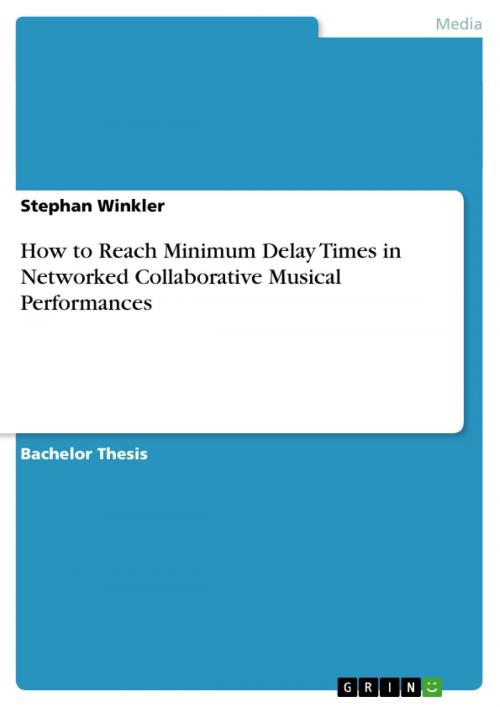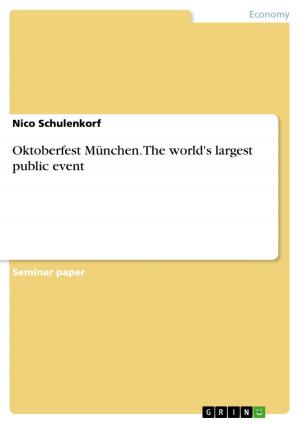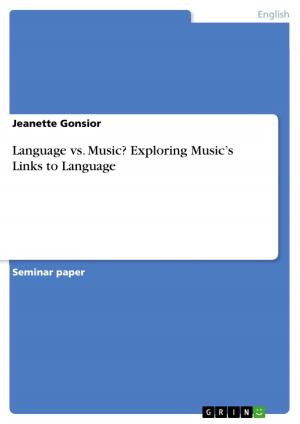How to Reach Minimum Delay Times in Networked Collaborative Musical Performances
Nonfiction, Computers, Application Software, Multimedia| Author: | Stephan Winkler | ISBN: | 9783640951826 |
| Publisher: | GRIN Publishing | Publication: | July 6, 2011 |
| Imprint: | GRIN Publishing | Language: | English |
| Author: | Stephan Winkler |
| ISBN: | 9783640951826 |
| Publisher: | GRIN Publishing |
| Publication: | July 6, 2011 |
| Imprint: | GRIN Publishing |
| Language: | English |
Bachelor Thesis from the year 2010 in the subject Communications - Multimedia, Internet, New Technologies, grade: 1, St. Pölten University of Applied Sciences, course: Grundlagen der Audiotechnik, language: English, abstract: High Bandwidth and the rapid development of social networks introduce a new way of making music together. The users of this new community are ambitious musicians and can log into online jam sessions to play together, overcoming the distance between them. Remote collaborative musical performances over the internet are already possible and there are numerous solutions out there. But all these solutions are dealing with one problem: Latency. This means, the audio signal of one user reaches the other user not in real time but lagged, which makes it impractical to make music together. It's not feasible to eliminate Latency but it is feasible to reduce it. In this work I will define tolerable latency and I will outline possible problems which create latency in the audio conduction and recommend solutions, for keeping latency as low as possible. This includes both client-side difficulties like bandwidth, real time audio compression, buffer times, and problems in the server-side streaming architecture like transport protocols, synchronization, packet loss, and delay times.
Bachelor Thesis from the year 2010 in the subject Communications - Multimedia, Internet, New Technologies, grade: 1, St. Pölten University of Applied Sciences, course: Grundlagen der Audiotechnik, language: English, abstract: High Bandwidth and the rapid development of social networks introduce a new way of making music together. The users of this new community are ambitious musicians and can log into online jam sessions to play together, overcoming the distance between them. Remote collaborative musical performances over the internet are already possible and there are numerous solutions out there. But all these solutions are dealing with one problem: Latency. This means, the audio signal of one user reaches the other user not in real time but lagged, which makes it impractical to make music together. It's not feasible to eliminate Latency but it is feasible to reduce it. In this work I will define tolerable latency and I will outline possible problems which create latency in the audio conduction and recommend solutions, for keeping latency as low as possible. This includes both client-side difficulties like bandwidth, real time audio compression, buffer times, and problems in the server-side streaming architecture like transport protocols, synchronization, packet loss, and delay times.















